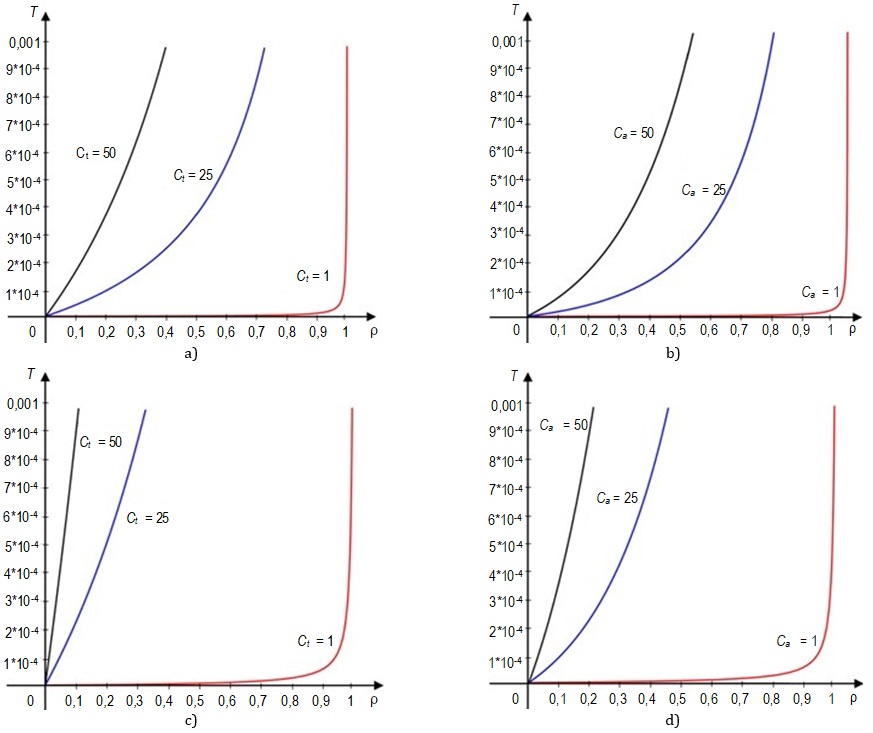
Research of Average Delay in Telecommunication Networks Providing Telemedicine Services
https://doi.org/10.31854/1813-324X-2024-10-3-59-65
EDN: DRRDAM
Abstract
Relevance. According to the research of the consulting company Global Market Insights the volume of the market of telemedicine in the territory of the Russian Federation by 2025 is estimated at 96 billion. Rub. which is more than 3 times higher than the figures of 2023. Changes in telecommunications systems and networks have a direct impact on redesigning the network architecture and expanding the range of services provided. Thus, the emergence of fifth-generation communication networks is a necessary measure to ensure a high density of devices (1 million. per 1 sq. m) and the virtues of circular delay 1 ms. Communication networks 2030 will expand the services of the first set of telemedicine services through holographic avatars, augmented reality services, Tactile Internet.
Purpose. Determination of the dependence of the delay on the intensity of traffic and the duration of packet servicing for the first set of telemedicine services in the communications networks of the fifth and subsequent generations. Analysis of ways to assess the quality of telemedicine services.
Methods. The work uses methods of system analysis, cluster analysis and the theory of teletraffic. Mathematical modeling of the communication network is carried out.
Solution. The characteristics of medical data used by telemedicine network are presented. Quality indicators of telemedicine services have been formulated. The model of communication network of the fifth and subsequent generations based on the quality of service provision and clustering of the territory was developed. The results of calculations for peak speeds 5G and 4G are obtained, which makes it possible to determine the dependence of delay on the coefficient of variation of service duration and on the coefficient of variation of interval between applications.
Novelty. The idea of creating and calculating a network model for the provision of the first set of telemedicine services in fifth- and succeeding-generation networks has elements of scientific novelty, as well as the use of the term «Quality of Experience» for quality assessment in communication networks providing telemedicine services.
Significance (theoretical). The location of data-processing centers in regional or regional centers could provide the first set of telemedicine services on ultra-low latency networks worldwide. The creation of digital clusters improves access to health care, partially reducing the digital divide without the need to expand the number of health organizations and increase the number of staff in remote locations.
Relevance (practical). The results obtained in the work can be used to determine the characteristics of equipment used to provide real-time services in the communications networks of the fifth and subsequent generations.
About the Authors
M. A. MakolkinaRussian Federation
M. V. Sharlaeva
Russian Federation
References
1. Volkov А., Muthanna А., Koucheryavy А. Fifth generation communications networks: on the way to networks 2030. Telecom IT. 2020;8(2):32–43. (in Russ.). DOI:10.31854/2307-1303-2020-8-2-32-43. EDN:ZWNTDB
2. Digital healthcare on the N3.Health platform. Information technology in medicine. (in Russ.) URL: https://n3health.ru/informacionnye-tekhnologii-v-medicine [Accessed 10.05.2024]
3. FSFI «Rossiyskaya gazeta». How the introduction of telemedicine has affected the work of polyclinics (in Russ.) URL: https://rg.ru/amp/2022/08/31/telemost-s-vrachom.html [Accessed 10.05.2024]
4. Makolkina М.A. Development and study of a complex of traffic models and methods of quality assessment for augmented reality. D.Sc Thesis. St. Petersburg: The Bonch-Bruevich Saint-Petersburg State University of Telecommunications Publ.; 2020. 436 p. (in Russ.) EDN:WTFOWG
5. Yandex.Cloud. QoS. (in Russ.) URL: https://yandex.cloud/ru/docs/glossary/qos [Accessed 10.05.2024]
6. Shchukina О. Modeling IPTV bandwidth demand increased by channel surfing at commercial breaks. T-Comm. 2011;5(7):168‒171. (in Russ.) EDN:OPICFZ
7. Technology Forum Telecommunications. Codecs, standards and video encoding formats. (in Russ.) URL: https://forumtech.ru/novosti-v-sfere-telekommunikaczij/kodeki-standarty-formaty-video [Accessed 10.05.2024]
8. Rec. ITU-T P.10/G.100. Vocabulary for performance, quality of service and quality of experience. November 2017.
9. Vladzimirsky А.V. Matrix for direct-to-consumer telemedicine quality assessing. Journal of telemedicine and e-health. 2020;6(4):37‒44. (in Russ.). DOI:10.29188/2542-2413-2020-6-4-34-44. EDN:SLLMVO
10. Zakharova Т.V. Optimal arrangements of queuing systems with FIFO service discipline. Moscow University Computational Mathematics and Cybernetics. 2007;31(4):163‒169. EDN:PGBUJN
11. Vihrova О. Application of the approximate method of analyzing the session establishment time in the subsystem IMS. Proceedings of the All-Russian Conference with International Participation on Information and Telecommunication Tech-nologies and Mathematical Delimitation of High-Tech Systems, 22‒25 April 2014, Moscow, Russian Federation. Moscow: RUDN University Publ.; 2014. p.74‒76. (in Russ.) EDN:UTBUIB
12. Mordachev V.I. Required restrictions on characteristics of 4G/5G mobile (cellular) communications to ensure their safety for users. Doklady BGUIR. 2022;20(3):54‒62. (in Russ.) DOI:10.35596/1729-7648-2022-20-3-54-62. EDN:BYMZMW
13. Chistova N.A. Study of influence on reduction of digital gap and development of methods of formation of digital clusters of communication networks with ultra-small support. PhD Thesis. St. Petersburg: The Bonch-Bruevich Saint-Petersburg State University of Telecommunications Publ.; 2021. 124 p. (in Russ.) EDN:GIIDBP
Review
For citations:
Makolkina M.A., Sharlaeva M.V. Research of Average Delay in Telecommunication Networks Providing Telemedicine Services. Proceedings of Telecommunication Universities. 2024;10(3):59-65. (In Russ.) https://doi.org/10.31854/1813-324X-2024-10-3-59-65. EDN: DRRDAM


































